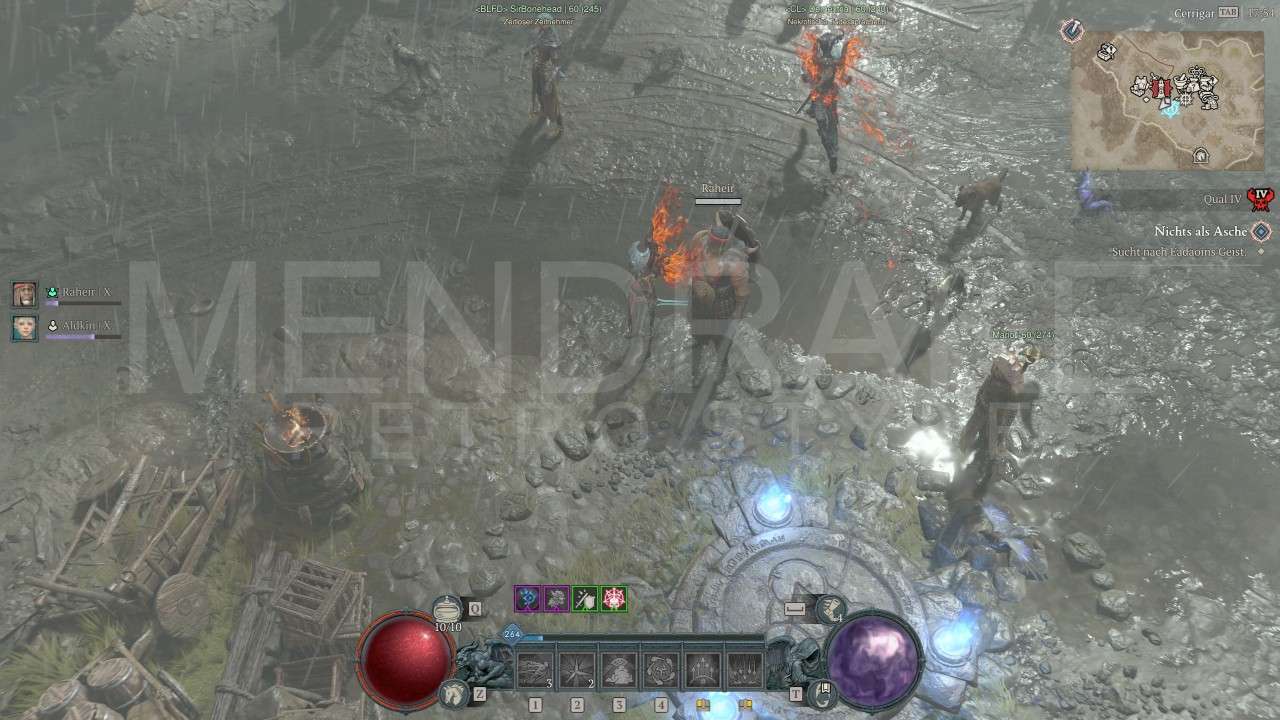Blizzard Entertainment’s Diablo 4, the latest installment in the iconic action-RPG franchise, launched in June 2023 to widespread acclaim. Fans and critics praised its visceral combat, atmospheric world, and return to the series’ dark roots. Yet, barely a year later, the game finds itself in troubled waters. With a dwindling player base—reportedly averaging just 7,000 concurrent players on Steam (excluding Battle.net figures)—and mounting criticism over its lack of meaningful endgame content, Diablo 4 risks fading into obscurity unless Blizzard addresses its core issues. What went wrong, and can the developers salvage the experience?
The Curse of the Endgame Grind
The most glaring flaw in Diablo 4’s current state is its endgame stagnation. Players report that after reaching Level 230 (or the equivalent progression in World Tiers), the game’s content loop collapses into mindless repetition. The thrill of chasing legendary loot, experimenting with builds, and conquering Nightmare Dungeons gives way to a monotonous cycle of “run, kill, repeat.” Once players complete the campaign and seasonal objectives, there’s little incentive to keep pushing forward.
The endgame activities—Helltides, Nightmare Dungeons, and world bosses—quickly lose their luster. These activities are not only recycled across seasons but also lack the depth or variety to sustain engagement. Players are left asking: “Why am I still playing?” Grinding for marginally better gear or Paragon points becomes a chore rather than a challenge, especially when the rewards fail to justify the effort.
Seasonal Content: A Cycle of Diminishing Returns
Live-service games thrive on regular, meaningful updates, but Diablo 4’s seasonal model has struggled to innovate. Seasons 1 through 7 (including the current season) have introduced only minor gameplay tweaks, cosmetic rewards, and repetitive battle passes. While the Vessel of Hatred DLC promises new story content and a playable faction, its impact remains uncertain. For now, seasons feel like reskins of previous iterations, asking players to rehash the same objectives:
- Complete seasonal quests (often identical to prior seasons).
- Farm overworld events for currency.
- Grind Nightmare Dungeons for glyph upgrades.
The lack of fresh mechanics or aspirational goals (e.g., raid-like encounters, leaderboards, or build-defining uniques) has left the community disillusioned. Even the introduction of Malignant Hearts or vampiric powers in earlier seasons failed to inject long-term excitement. Players crave lasting content, not temporary gimmicks.
The Leveling Paradox: 70 Levels of “Swamp Running”
Diablo 4’s leveling system exacerbates the problem. After Level 70-80, progression slows to a crawl. The journey to Level 100—a feat requiring dozens of hours—rewards players with little more than a sense of completion. The post-Level 70 experience lacks:
- Meaningful milestones: No new abilities, game-changing loot, or exclusive content.
- Dynamic scaling: Overworld enemies level with the player, erasing any feeling of power growth.
- Exploration incentives: The open world, while visually stunning, becomes a checklist of reused events and cellars.
Players describe the endgame as “running through a swamp” — a slog with no payoff. Without raids, pinnacle bosses, or competitive modes, the game’s longevity hinges on a hamster wheel of repetition.
Blizzard’s Missteps: Ignoring the ARPG Formula
Blizzard’s approach to Diablo 4 has baffled fans. The studio seemingly forgot what makes ARPGs timeless: player agency and rewarding progression. Key missteps include:
- Itemization Woes: Generic affixes (“+5% damage to close enemies”) and a lack of build-defining uniques make loot feel uninspired.
- Overemphasis on the Open World: Forced multiplayer elements and time-gated events clash with the solo-friendly ARPG ethos.
- Fear of Power Fantasy: Nerfing popular builds (e.g., Sorcerer’s Chain Lightning) instead of buffing underperforming ones stifles creativity.
- Stingy Rewards: Players invest hours into grinding, only to receive salvage materials or gold—resources that lose value post-campaign.
Compared to competitors like Path of Exile or Last Epoch, which offer intricate endgame systems (e.g., mapping, crafting, and endless scaling), Diablo 4 feels shallow.
Community Frustration: “We’ve Done This Before”
The subreddit r/Diablo4 and forums are flooded with posts titled “Is anyone still playing?” or “What’s the point?” Veteran players, many of whom adored Diablo 2 and Diablo 3, express disappointment. A common sentiment: “I love the gameplay, but there’s nothing to do.”
The backlash intensified after Season 7’s launch, which offered no substantial updates. Players argue that Blizzard is prioritizing monetization (e.g., $25 cosmetic bundles) over gameplay. The absence of a PTR (Public Test Realm) for seasonal content further suggests rushed development cycles.
What Can Blizzard Do?
To revive Diablo 4, Blizzard must act swiftly:
- Expand Endgame Content: Add raids, leaderboards, and rotating pinnacle bosses with unique mechanics.
- Revamp Itemization: Introduce rare, build-altering items and crafting systems.
- Enhase Seasonal Innovation: Each season needs a permanent feature (e.g., new dungeons, classes, or game modes).
- Accelerate Progression: Make leveling beyond 70 rewarding, with exclusive cosmetics or power spikes.
- Listen to Feedback: Re-engage the community through transparent communication and polls.
The upcoming Vessel of Hatred DLC is a start, but Blizzard cannot rely on expansions alone. The core game needs reinvigoration.
A Test of Blizzard’s Legacy
Diablo 4 is not beyond saving. Its foundation—tight combat, stunning art, and lore—is rock-solid. However, Blizzard’s reluctance to break free from stale design choices threatens to derail its potential. With competitors raising the bar and players losing patience, the studio must decide: Will Diablo 4 evolve into the genre-defining titan it was meant to be, or will it become a cautionary tale of live-service stagnation?
For now, Sanctuary’s gates remain open, but fewer adventurers are answering the call.



Leave a Reply